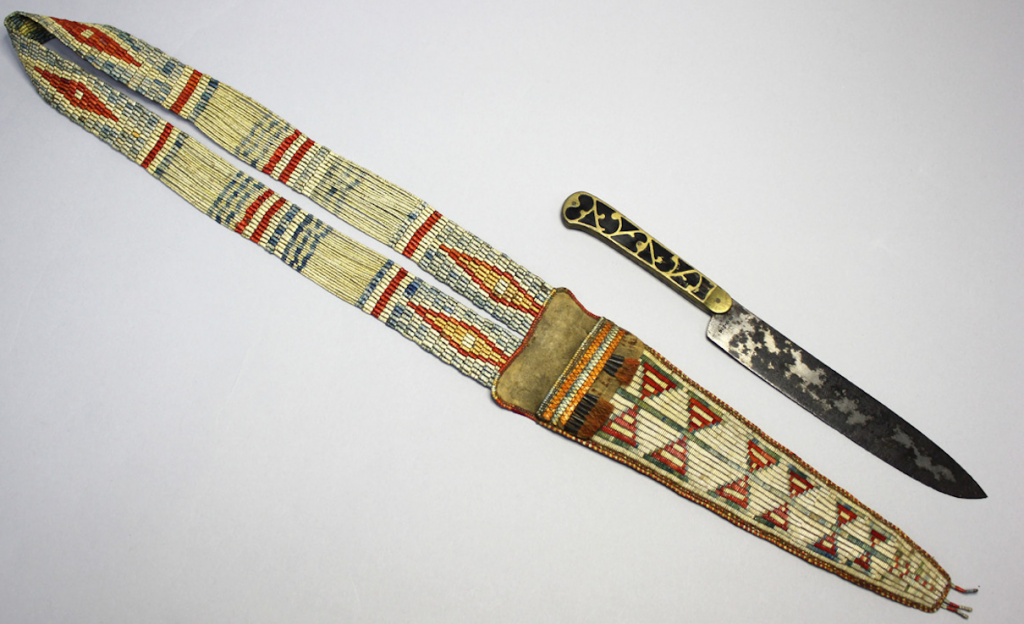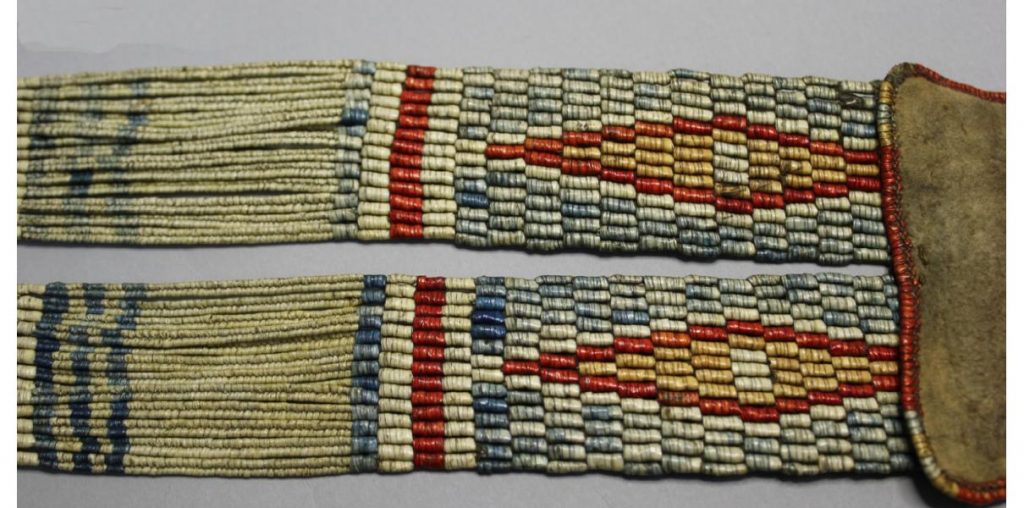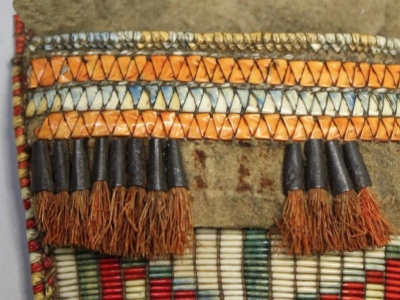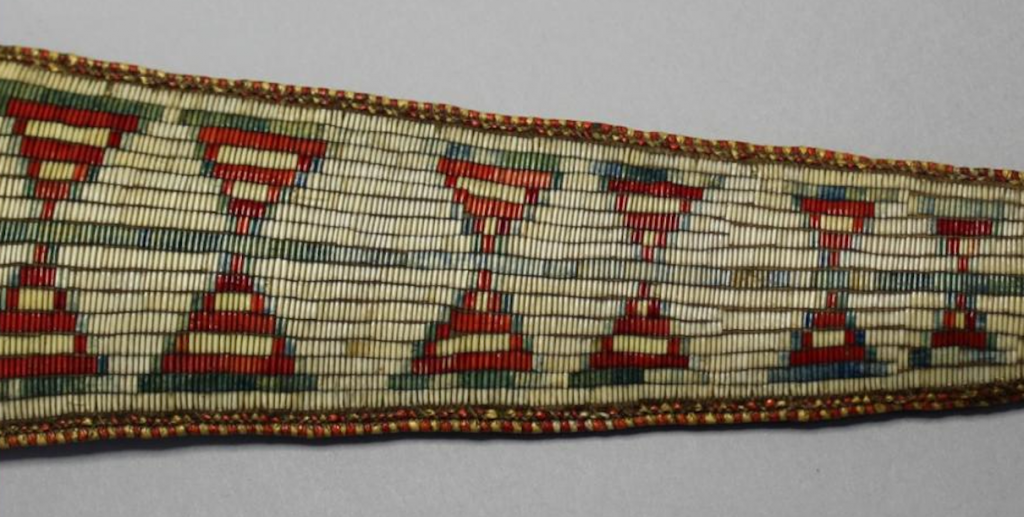A GRASAC Exhibit
Curated by Crystal Migwans (2013)


1) Tool
In terms of utility, this pair of objects is simply a knife and sheath; an everyday tool and its carrying case:
Knives obtained through trade were common among the Great Lakes people. They were used in hunting and food preparation, and also worn in warriors’ regalia. This knife has an iron blade marked ‘A. Hatfield’ (perhaps a maker’s mark), and a brass handle inlaid with a black material. Knives which didn’t already feature decorative inlay on the handles were often enhanced with porcupine quills. They were carried in sheaths of tanned deer hide, hung around the neck or shoulder by a strap.

2) Decorative Accessory
As objects meant to be displayed as part of an outfit, the knife and sheath can be seen as decorative accessories:
Knife sheaths were often enhanced with quillwork, beads, or dangling tassels, similarly to moccasins and other items of clothing. Clothing was an important means of expression in Great Lakes cultures: fancy dress expressed wealth in talent (of the quillworkers) and leisure time (earned by successful hunters). A sheath as flawlessly quilled as this may have been made for a prestigious person or intended as a valuable gift. Gifts of elaborate clothing were particularly significant in forming trade relations with other nations, as they showed that each party was generous enough to give the shirt off their back if required.

3) Quillwork
From both an aesthetic and technical perspective, the sheath is an exceptional example of quillwork:
This sheath is decorated with porcupine quills, dyed with natural ingredients in bright red, blue, yellow, and orange. Instead of using a sewing needle and thread to stitch on the quills, a hole was poked in the hide with an awl, and sinew threaded through by hand. Different styles of quillwork are created by folding, wrapping, twisting, or weaving the quills around the sinew. There are eight styles of quillwork on this sheath alone. This can be identified as Great Lakes quillwork because of its geometric structure (symmetric lines, diamonds, and blocks), and its use of zigzagging bands of quills instead of straight up- and-down bands to fill large areas.

4) Thunderbird
From an iconographic perspective, the most significant aspect of the sheath is the thunderbird motif:
Symmetry and abstraction are important parts of Great Lakes art. In the main design area on the front are a series of hourglass shapes receding into the sheath’s tapered end. By comparing these motifs to images on similar items, we can see how the hourglass shape is an abstraction of a thunderbird’s body, with its spread wings and tail. Whether these abstract motifs reference a specific story or are simply referencing these spiritual beings is known only to the maker.
